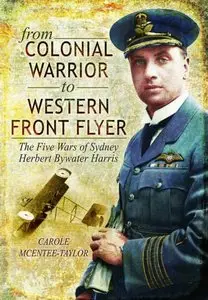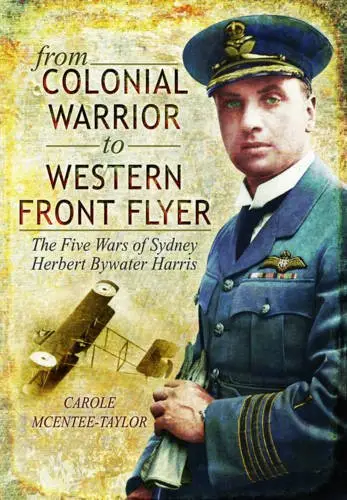From Colonial Warrior to Western Front Flyer: The Five Wars of Sydney Herbert Bywater by Carole McEntee-Taylor
English | Apr 19, 2015 | ISBN: 1473823595 | 240 Pages | EPUB/MOBI/AZW3/PDF (Converted) | 36 MB
English | Apr 19, 2015 | ISBN: 1473823595 | 240 Pages | EPUB/MOBI/AZW3/PDF (Converted) | 36 MB
Sydney Herbert Bywater Harris was an adventurer, a man possessed of great courage and charm, who fulfilled every schoolboy fantasy and really did ‘live the dream’.
The second youngest of seven children, the ordinary life held little appeal for Sydney so, in 1898, at the age of 17, he left home in Ilford for the Klondike gold rush. Arriving too late to make his fortune he decided to join the US Army.
Two and a half years later, after seeing action in the Boxer Rebellion and the Philippines Insurrection, Sydney returned to England where he met and married Elsa de Verde Verder, a lady from an affluent Vermont family. A year later Sydney joined the Kings Colonials Imperial Yeomanry, later renamed the King Edward's Horse.
Still seeking excitement, in August 1914 he transferred to the Royal Flying Corps and in 1916 went to France with 23 Squadron to fly the FE2b. Life expectancy for pilots on the front lines was very short and he was badly wounded while gun-spotting over enemy lines. After several months recovering he was posted to Turnberry as Chief Instructor and on the 13th August 1917, he was posted to Marske (by-the-Sea), with the rank of Lieutenant Colonel, to form and command No.2 Fighting School. In 1919 he was awarded the Air Force Cross.
But war was not quite finished with Sydney. In 1936, fleeing imminent bankruptcy, he became involved with the International Brigades in the Spanish Civil War. Returning back to England he joined the RAFVR (Royal Air Force Volunteer Reserve) and when the Second World War broke out he was posted to Turnhouse as Section Controller. This really didn’t suit him and, determined to see more action, at the age of 58, he arranged a transfer to France as Adjutant with No 1 Squadron where his duties included liaising with the French Air Force. He later transferred to 1 ATS near Perpignan and was one of the last to leave France with the German Blitzkrieg only a few hours away. Despite his ill health he continued to serve throughout the war and in 1947 became Commander at Marchwood Park where the members of the ‘Guinea Pig’ club went to recover.
A remarkable life led in an era of endless possibilities…



